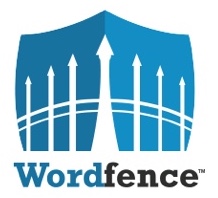The first rule of building a WordPress website with plugins – use as little as possible.
Unlike iOS AppStore, where there are stringent rules before one app gets published, WordPress plugin marketplace has little rules for approval. Anyone with a WordPress account can publish their plugin in the marketplace.
If you’re not technical enough to make an informed decision, follow these rules
- Only install plugins with more than 50k installations, this number makes sure more than 50k websites trust the plugin
- Only install plugins with reviews of min 4 stars
- Only install plugins with last updated period less than 12~15 months. Do not install those with more than this period as it may not be compatible and create loopholes for your website.
The reason behind this is simple. You don’t want to leave your website vulnerable for attacks. Installing outdated and unsecured plugins is the same as installing locks that can be opened by many keys.
These are the 7plugins I used for website
Elementor + Elementor Pro

Elementor is the best theme builder plugin I ever encountered as compared to DIVI and WPBakery. The UI and functions are so much more advanced than the others. I was always disappointed by DIVI and WPBakery limited functionalities. But when I tried this, I was like I discovered gold.
With Elementor, you can build an entire theme without knowing HTML, CSS & Javascript. Whether you are a beginner or designer, the tool is fit for you to build amazing websites with great design.
The most important thing is, it is lightweight and simple. Most premium WordPress themes bind with many plugins that make a website vulnerable. Like the Salient theme I used to like, it came with 7 other plugins.
Pros
- Perfect for beginner and designer
- Freedom to tweak every single px for your website
- Lightweight
- Comes with form builder
- Affordable
- Many more
Cons
- Need custom CSS to style ul and ol (pointers)
All-in-One WP Migration

This plugin is the most straightforward migration plugin for WordPress. It does not require to set up anything, just two clicks, you have your exported file ready. You can then import it locally or to other servers.
Pro
- Lightweight
- Simple and straight forward
- Two clicks setup
Cons
- May need to configure the server upload storage, as most servers limit to 8MB
- The free version is not good enough to support migration for large websites, especially eCommerce
Duplicate Post

This plugin allows you to clone a blog post or a web page. It is handy and can save you time to re-build or reconfigure the page.
Really Simple SSL

This plugin turns your site from HTTP to HTTPS. It converts all HTTP URL to HTTPS. It is a useful plugin that can save you many hours to make your site secure.
However, to use this plugin, your server must have an SSL certificate installed.
Wordfence Security

When it comes to WordPress, most people have the concern that it is not secured. You’re right that WordPress alone as a CMS is not secured.
A security plugin like Wordfence is your website lifeline. This plugin helps to protect attackers from brute-forcing and hacking your website.
The setup is simple – you install the plugin, follow their guide and you have your website securely protected.
The plugin also informs you when your other plugins are outdated or when someone tries to brute-force your login page or attacks your website.
Yoast SEO

As the name suggests, this plugin is for SEO as WordPress does not come with any SEO feature for your to define meta title, description and featured image. Such a plugin gives you the ability to do so. It also generates a site map for you to submit to Google Search Console.
Final thought
WordPress is a fantastic CMS, and the community behind is even more amazing. I love it as I have built over 30 websites with this CMS.
Again, my advice for a beginner is to avoid installing too many plugins. And, as a website owner, you need to do this:
- Update your WordPress to the latest version every month
- Update your plugins every 2 weeks minimally
- Install less than 10 plugins
- Make sure all plugins are trustworthy with 4 stars review
